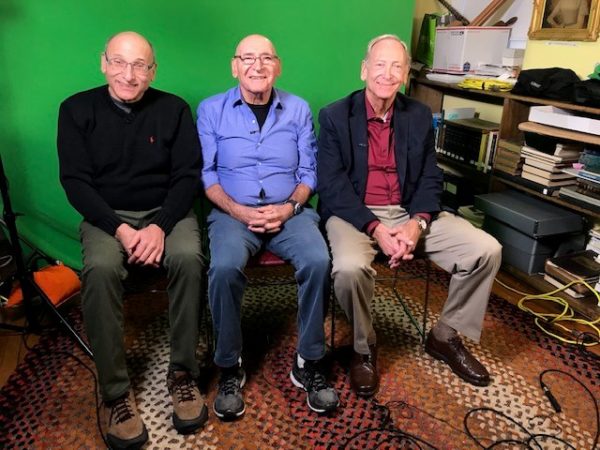The Avon Theatre Film Center in Stamford is set to premiere the documentary “Remembering the Family Store, Downtown Stamford Circa 1940-1965” through an invitation-only screening on June 12. This film about the city”™s small-business retail environment came to fruition through a collaboration of the Stamford-based Jewish Historical Society of Fairfield County (JHSFC) and Norwalk-based filmmaker Marge Costa”™s Aries Production.

According to Gail G. Trell, a JHSFC board member who heads the committee for “Remembering the Family Store,” the idea for the documentary first came when Lester Sharlach, the JHSFC president from 1988 to 1990, showcased a slideshow presentation to various organizations that highlighted Jewish family stores in the area and their respective owners. Sharlach also shared stories he knew of the owners.
“And it was very, very popular. Wherever he went, he stimulated, he had people reminiscing,” Trell said. “We heard more stories we hadn”™t even planned on hearing. Together, the committee said, ”˜Well, let”™s make a documentary. Let”™s show it as a film.”™”
The group successfully applied for a grant from the Stamford Arts & Cultural Commission and hired Costa, a founding member of the Norwalk Film Festival and executive director of the Norwalk Education Foundation.
“When they hired me, the original plan was ”˜X,”™ and then through discussions and interviews, it became a completely different end product from what was originally envisioned,” Costa said of the project”™s evolution.
Costa sought to film interviews with family members tied to the Stamford stores and wound up with more than 30 interviews representing 25 family businesses. Interviewees include the brothers Douglas, Steve and Robert Karp of Karp”™s Stationery, Thomas Bradford of Superior Barbershop and Larry Weinroth and Ruth Weinroth Adatto of Bedford Jewelers.
In addition, Costa accessed the JHSFC”™s archives for historical material and received contributed material from the personal collections of the interviewees. Costa and Trell cited pandemic-era quarantining and lockdowns as a major factor in individuals being more willing to submit material, as they had more time to devote to aiding the production.

The immigrant experience and the melting pot environment of Stamford through the years was another aspect of the film that expanded on the original slideshow. Though Jewish family stores were still a big part of the final film, families belonging to non-Jewish ethnic groups were also spotlighted. Sharlach believed this would allow the film to more easily appeal to the wider community.
“He said this film is not going to be of interest to the community if it”™s just Jewish merchants,” Trell recalled. “So, we went out and we have Greeks and African Americans and Irish and Italians, all talking about their business. So, we have it so that it is a diverse family-store story.”
Similarly, Costa believed the documentary will be of great interest to everyone, including young people.
“I think it just will resonate with a lot of people because the history is just so rich ”” and a lot of times, no one talks about this kind of history,” Trell said. “This is why we are where we are today. This is why Stamford is where Stamford is today, that Stamford didn”™t look like this back in the 1920s. It was all mom-and-pop stores.”
Unfortunately, Sharlach passed away in July 2020, just one month after the documentary was originally set to premiere. But Trell believed the film in its current form fulfills Sharlach”™s vision and JHSFC”™s mission of recording Stamford”™s history.
“One of the people who saw the screening made a comment: ”˜I wish Lester was here to see it,”™” Trell stated.
















